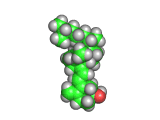| Su | Mo | Tu | We | Th | Fr | Sa |
|---|---|---|---|---|---|---|
| 1 | 2 | 3 | 4 | 5 | 6 | 7 |
| 8 | 9 | 10 | 11 | 12 | 13 | 14 |
| 15 | 16 | 17 | 18 | 19 | 20 | 21 |
| 22 | 23 | 24 | 25 | 26 | 27 | 28 |
| 29 | 30 |
As someone interested in science I find it a little frustrating and worrying that there is not a clear answer yet to the question 'Is human activity causing the temperature of the planet to increase significantly?'. It seems that the evidence is not yet clear, it is hard to say, one way or another, whether warming or cooling trends are significantly impacted by human activities. Hence, there is an active scientific debate. And there is also an acrimonious debate which serves to increase confusion.
Often the debaters express their opinions with passion. This caused me to wonder, how close to religious ferver have the competing sides of the climate debate come. Fortunately, Richard Brodie, has described a short set of features to look for in religions, leading to the following scoring of the pro and anti anthropomorphic global warming (AGW) groups.
| Characteristic | Pro-AGW | Anti-AGW | Explanation |
|---|---|---|---|
| Tradition | Yes | Yes | An established tradition, passed from elders to initiates |
| Heresy | Yes | Yes | What will happen to you if you do not believe |
| Evanglism | Yes | Yes | A drive to spread the word |
| Making Sense | Yes | Yes | An explanation of observations, such as a sudden increase in huricanes, or increasing antarctic ice |
| Repetition | Yes | Yes | A tendency to repeat mantras, endlessly |
| Security | Yes | Maybe | The security of belonging and the fear of being shunned, known so well by teenage converts |
| Crisis | Yes | No | The promise of a coming disaster |
| Food | No | No | Feasts and fasts as prescribed by the cause |
| Sex | No | No | Who can marry who, and how often |
| Problem | Yes | Yes | A need to pore over the written lore in order to interpret the true meaning |
| Dominance | Yes | Yes | A status ladder to be climbed to high priesthood |
| Belonging | Yes | Yes | A sense of social engagement |
A couple of explanations may help: These characteristics are the things to look for in a successful religion. For example, some prescriptions about food tend to be helpful. Feasts, rules about what to eat, what not to eat, and so on. As far as I can tell the pro- and anti-AGW groups do not make provision for strictures with respect to food. (Though one can see how this might happen if labeling of total carbon footprints were to become part of a future directive).
Religions tend to concern themselves with issues related to sex. Marriage, baptism, contraception, and so on. Again as far as I can see the AGW debaters do not make pronouncements in this direction.
The list above seems to indicate that the substantial difference between the groups is the impending crisis focus of the pro-AGW group. For the pro-AGW group, as for religions, this is likely very helpful in increasing popularity and interest in the cause. The anti-AGW group seem to have no such characteristic, and this reduces the effectiveness of their message and cause.
Personally, I think that CO2 release into the atmosphere is symptomatic of inefficiency and waste. Energy resources are being converted into energy and a waste product that could just as easily be plastic bottles, bags, or all manner of desirable modern products. So, I would certainly advocate less CO2 production, on the grounds of conservation of a finite resource (hydrocarbons in the ground) rather than on the grounds of a certain causative link between atmospheric CO2 and significant warming. It happens that by conserving resources we can also mitigate the risk while the scientific and religious discussions continue.

The molecule above is one of the group of molecules collectively known as vitamin-D. Such molecules are aggressively marketed (i.e. hawked!) by the nutraceutical and food supplement industries, based on the fact that people who are severely deficient in vitamin-D, to the point of exhibiting bone weakness, also have depressed immune systems. Fortunately vitamin-D does little harm and arguably provides some benefits (see for example the nice write up provided by the Linus Pauling Institute). So, as is often the case, the nutraceutical business activity does little harm.
Industrially cholecalciferol is manufactured through the irradiation of 7-dehydrocholesterol, extracted from lanolin, with ultraviolet light. The lanolin itself is extracted from the grease in sheep wool, or from cow or pig skins. Fortunately, these sources are widely produced materials, so the price of the complex vitamin-D molecules, like cholecalciferol, are relatively low. Interesting, cholecalciferol finds a less 'healthful', or expensive, application as an additive to rat poison. For rodents, cholecalciferol increases the toxicity of anticoagulents like warfarins, which cause poisoned rats to bleed to death internally.
Two facts to keep in mind when you next purchase multivitamins: The vitamin-D component, as likely as not, was extracted from an animal skin; and rat poison was the other possible product that the cholecalciferol could have been used in.